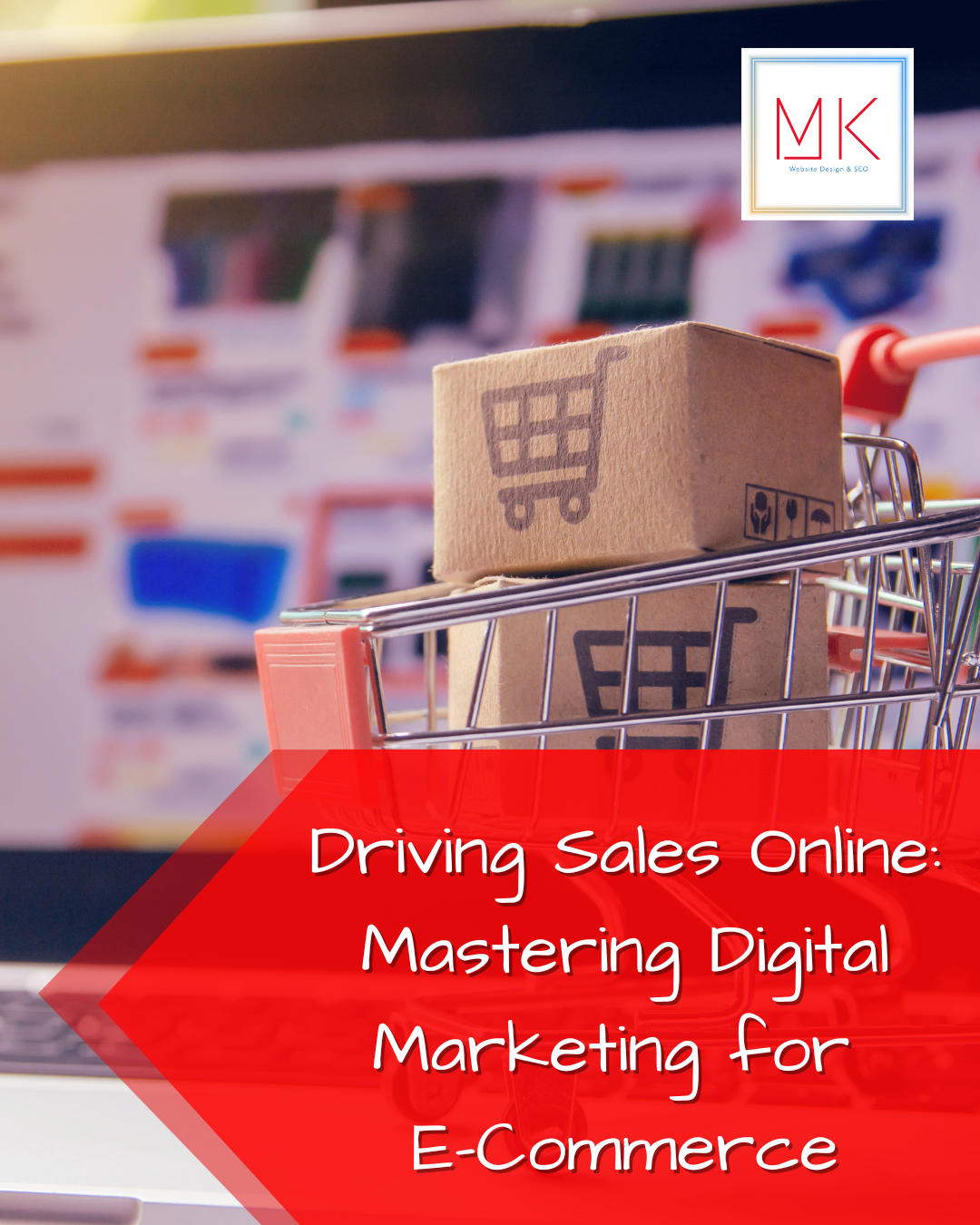Mastering Digital Marketing for E-Commerce
In today’s competitive world, mastering digital marketing for your e-commerce store is a necessity. To thrive in this evolving landscape, you need to stand out from the crowd. It is vital to attract, engage, and convert online customers. In this article, we’ll focus on some actionable strategies to master digital marketing for your e-commerce store. We’ll seek to understand the e-commerce world, then look into methods for building a solid digital marketing foundation, some advanced digital marketing tactics, and how you can measure and analyze your success.
Benefits of Using Digital Marketing for E-Commerce
Before we dive deeper into the article, here are some key benefits of using digital marketing for e-commerce:
- Increased visibility and reach
- Enhanced brand awareness
- Targeted marketing
- Enhanced customer engagement
- Optimized conversion pathways
- Cost-effective
- Increased flexibility
- Competitive advantage
- Data-driven insights
Overall, digital marketing helps e-commerce store owners reach new customers, drive sustainable growth, and build lasting relationships. By using effective strategies, you can get all these benefits, too.
Understanding the E-Commerce World
The e-commerce world has many different types of businesses and changing customer behaviours. It is vital to understand them to navigate this evolving landscape successfully.
Business Models
There are many different types of e-commerce businesses, each requiring a different approach to digital marketing. The most common types are:
- B2C (Business to Consumer): This is the most common sort of online store. In this, businesses sell their goods directly to customers. Excellent customer service and personalization is needed here.
- B2B (Business to Business): In this type of business model, businesses sell goods or services directly to other businesses. This requires tailored marketing strategies and relationship building.
- C2C (Consumer to Consumer): C2C business models allow consumer-to-consumer transactions, like Etsy and eBay. User trust and buyer protection are needed here.
- D2C (Direct to Consumer): In this type of model, brands skip traditional retailers and sell directly to customers. In this model, solid digital marketing and brand-building efforts are necessary.
Trends in Online Shopping Behavior
Nowadays, most customers use their mobile phones for online shopping, requiring that businesses have mobile-friendly websites. Customers also prefer a personalized shopping experience but also prioritize their privacy. This must be balanced cautiously.
Other than that, social media marketing is necessary as many consumers spend a lot of time on social media. SEO optimization for natural language queries is also required as the use of voice assistants is rising.
Building a Strong Digital Marketing Foundation
A strong digital marketing foundation has three main pillars: website optimization, content marketing, and social media marketing.
Website Optimization
The foremost requirements for website optimization are user-friendliness and mobile responsiveness. Your website needs to be both for an optimal user experience. It requires fast loading speeds, easy navigation with logical menus and an easy-to-find search function. Your website should be mobile-friendly as well.
Your website needs more than practicality, though. It needs to have a good SEO score as well. For this, you will need to use keywords strategically and acquire high-quality backlinks. A website appearing high in search engine page results attracts customers.
Content Marketing
Content with valuable insights is mandatory for content marketing. Your blog posts, product descriptions, infographics, and videos should all fulfil this requirement. It should answer customer inquiries and be authentic and engaging. Your content should be informative and visually engaging as well.
Finally, you should encourage user-generated content, too. It will build social proof and trust for potential customers.
Social Media Marketing
The final step for digital marketing for your e-commerce store is social media marketing. Paid social media advertising attracts customers to your e-commerce store and website. It will allow you to target specific demographics to increase user conversions. You should experiment with different advertising formats, too, to find out which format resonates best with your audience. Don’t forget to add call-to-action buttons to your ads. You can also use the WooCommerce Pre Order plugin to enable pre-ordering for your products.
Two-way communication is also required for interacting with your audience. You need to respond quickly to comments, address customer concerns, and participate in relevant conversations. Your authenticity and responsiveness are crucial for effective social media marketing.
Mastering Advanced Digital Marketing Tactics
Now that you know the basics of digital marketing for your e-commerce, let’s move on to some advanced digital marketing tactics.
Pay-Per-Click (PPC) Advertising
The first advanced digital marketing tactic we’ll look at is PPC advertising. In this, you will bid on relevant keywords and create attractive ads for customers. These ads will appear in social media feeds or search results. When someone clicks on the ad, you will pay a small fee. This is a massive benefit of PPC advertising that you only pay when someone clicks on your ad.
Effective PPC advertising requires accuracy. You will need the right keywords for your target audience. Maintain a careful balance between reach and cost.
Don’t stop here, though. Also, use remarketing and retargeting strategies to target those who visited your store but left without buying anything. Show them personalized ads based on their abandoned carts, reminding them of what they want to buy.
Email Marketing
Skilfully utilized email marketing can nurture leads and convert them into loyal customers. Personalized promotions are particularly effective, and they will keep your brand top-of-mind for your audience. However, you must remember that emailing is a conversation. Your email marketing should reflect this.
Create compelling subject lines, and write appealing content with empathy in mind. Your email should also reflect authenticity and personality. Finally, optimize your email for deliverability. You must track your results and analyze key metrics like open rates.
Conversion Rate Optimization (CRO)
To reach the desired conversion rate, it is necessary to monitor and improve your website. CRO is essential for success as it maximizes your ROI, enhances customer experience, and provides valuable data insights. You can do CRO through A/B testing.
For A/B testing, you can change different portions of your website, including headlines, titles, content, button colours, calls-to-action, and layout. Show the two different versions to different visitors and compare the conversion rates for each group. It will enable you to know what version of your website appeals more to users.
Measuring and Analyzing Success
How will you know if you’re doing well if you don’t measure your success? You can do this by analyzing key metrics.
Key Metrics to Analyze
E-commerce businesses need to analyze some key metrics like website traffic, conversion rates, customer acquisition costs, average order value, and bounce rate. These metrics are the most important ones for your digital marketing. Still, there are others to keep an eye on, including page views per session, cart abandonment rate, and website traffic from social media.
Experimentation and Adjustment
You need to experiment to find out what works best for your audience and your store. Also, adjust your approach based on the results from key metrics. This is necessary to succeed in the dynamic and competitive world of ecommerce.
In conclusion, you need to follow the strategies given in this article to climb the ladder of e-commerce success. These tools and tactics will guide you to boost online sales significantly. If you’ve been struggling to drive traffic to your website or convert visitors into customers, remember that these actionable strategies can change that. Now, what are you waiting for? Start your journey to prosperity now!













